Ear tags for small ruminants like goats, sheeps, pigs etc. enhances the ability to identify and manage livestock. Our eartags are engraved with pre numbered and labels accordingly which does not fade over time and makes it simple/easy to read tags in the pasture/field. Thus, our eartags ensure long-term readability and offer ease of identification of inked numbers.
Advantages of Using Labelled Eartags:
- To enable farmers to have visual identification of livestock.
- Helps monitor animals movement, health, and reproduction.
- To help control breeding, epidemics, quarantine etc.
- To ease record keeping like field data and information, which aids in proper management.
How to apply Eartags on Small Ruminants
Step 1:
- Properly secure the animal. Movement of the animal’s head or body may cause injury to the handler, livestock or result in improper tagging. Please remember that it is inhumane to solely restrain or drag an animal by its ears.
- A small amount of feed can be offered during or after the tagging process as a reward.
For swine (Pigs), confine in a small pen, hog boards to restrict movement, or use a hog snare to completely secure the hog. Piglets can be held against a person’s body.
- For cattle (Cows), a chute or head catch is preferred for safe, secure restraint. A halter can be used to secure a calf to a sturdy post using a quick release knot.
- For sheep or goats, confine in a small pen or alley. Catch the sheep under the jaw lifting its nose into the air, and back it into a corner, or sit it on its rump between your legs. A halter or collar can also be used. Kids or lambs can be held against a person’s body while restraining the neck and head.
Step 2:
- Identify the tagging site on the animal’s ear.
- Proper hygiene and cleanliness during the tagging process is necessary to reduce the risk of infection.
- Use rubbing alcohol or a disinfectant solution (eg. Nolvasan) to clean the jaw of the applicator and the point of the tag that goes through the ear.
- Also, make sure the tagging site on the animal’s ear is clean.
- Tags should be applied in the middle-third of the ear between the upper and lower ribs for cattle and goats.
- Sheep and pig tags should be placed either above or below the main vein in the middle third of the ear.
Step 3:
- Select an ear tad to place in the animal’s ear.Make sure both parts of the tag list the same South Dakota 4-H identification number.
- Place the male portion of the tag, on the applicator pin and the female component under the retaining spring.
- Before tagging the animal, check alignment of the tagger by closing the jaw of the applicator to the point, where the two halves meet; the tag should be centered with the hole.
Step 4:
- With the correct tagging position located; firmly close the applicator in a fast manner and release. Apply the tag with the button part entering from the front (inside) of the ear. The female component should be read from the back (outside) of the ear.
- Remember to record the ear tag number applied to the animal as well as any other forms of identification the animal already has.
Step 5:
- Verify “Air Space” and tag application to ensure proper healing and retention.
- Inspect placement after tagging to ensure there is sufficient space between ear and ear tag. This can be done by turning the tag in a circle or gently pulling each side of the tag away from the ear to increase air flow and verify the stem/button is secured.
Precaution and Use:
- When applying ear tags to your livestock, pay attention to the positioning of the ear tag as well as its direction, considering which part faces the animal.
- You also ensure that proper disinfection process and procedure is adhered to.
Product Specification:
- Weight: 585 g
Dimensions: 4.8 × 4.0 × 2.0 cm
Type: Numbered Ear Tag


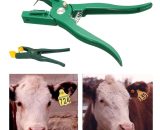
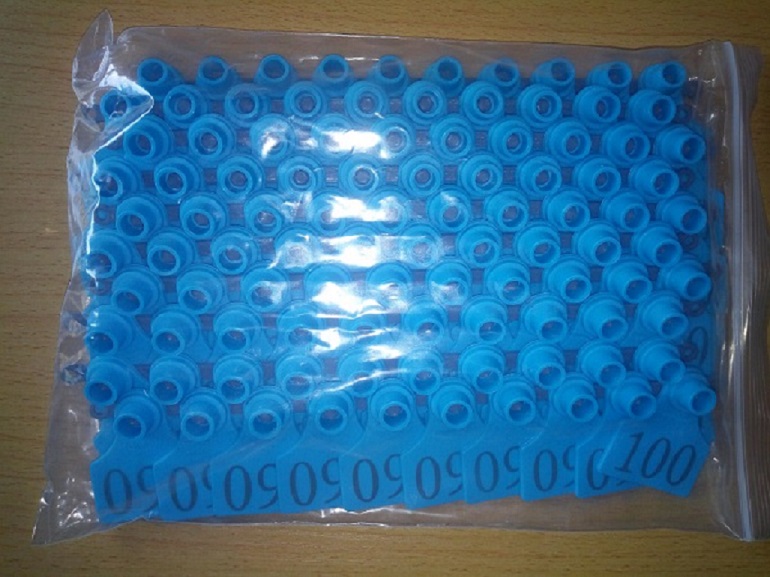
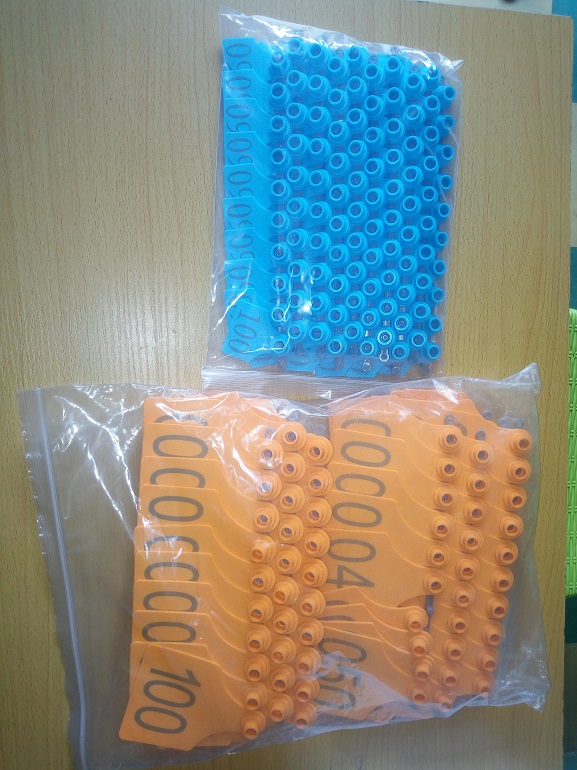
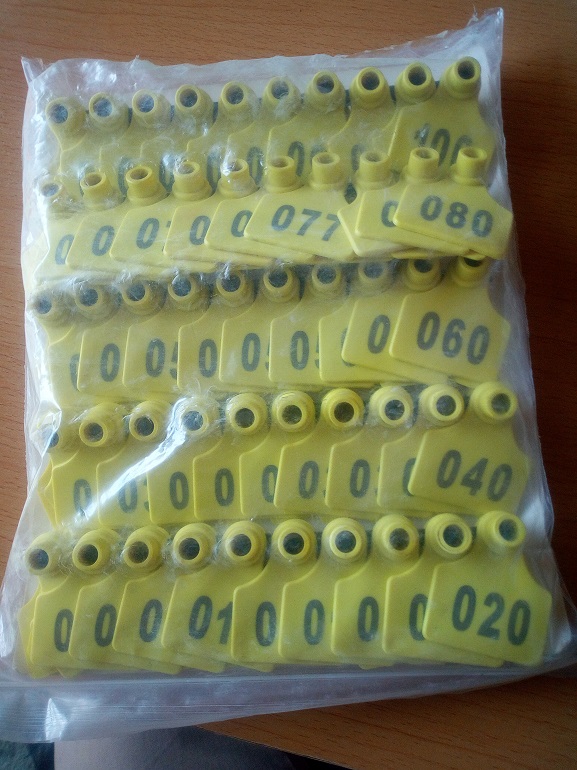
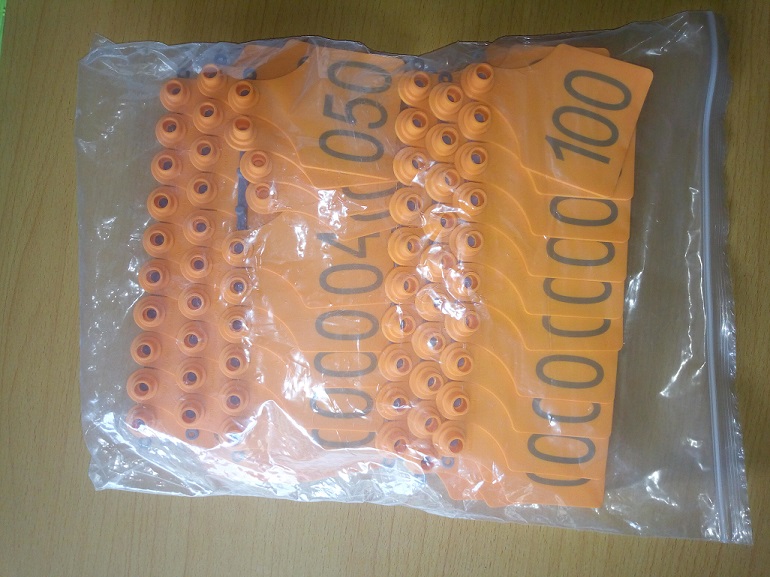




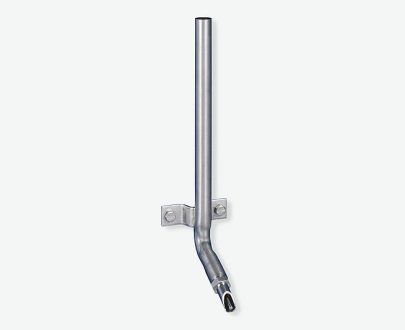


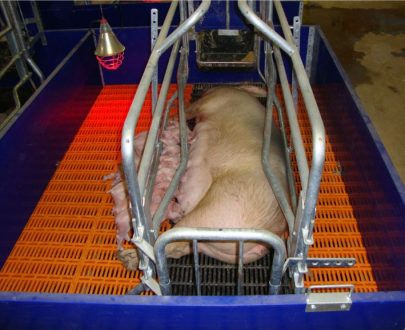
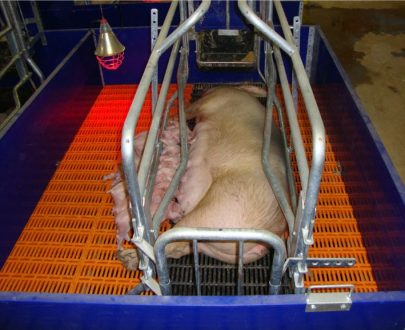
Customer reviews
Reviews
There are no reviews yet.
Only logged in customers who have purchased this product may leave a review.